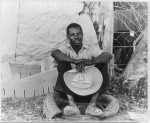 In 1935, Franklin Delano Roosevelt established the Resettlement Administration (RA), a New Deal program that aimed to relocate hundreds of thousands of farmers on exhausted land and migrant laborers to viable land in planned communities purchased with low interest loans. FDR established the program by executive order and Congress wasn’t a fan, to say the least, so it was underfunded from the start.
In 1935, Franklin Delano Roosevelt established the Resettlement Administration (RA), a New Deal program that aimed to relocate hundreds of thousands of farmers on exhausted land and migrant laborers to viable land in planned communities purchased with low interest loans. FDR established the program by executive order and Congress wasn’t a fan, to say the least, so it was underfunded from the start.
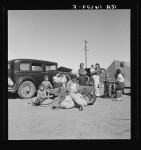 In an attempt to get the support of the public, the head of the RA, Columbia University economics professor Rexford Tugwell, appointed Roy Stryker, a former economics student of his at Cornell and an accomplished photographer, to lead the Historical Section of the RA’s Information Division. Stryker set up a photographic program to document the hardships of the farmers and their successes with the RA. He enlisted a cadre of exceptional photographers, Dorothea Lange, Walker Evans, Arthur Rothstein, Marion Post Wolcott, Jack Delano (no relation to FDR) and Gordon Parks among them.
In an attempt to get the support of the public, the head of the RA, Columbia University economics professor Rexford Tugwell, appointed Roy Stryker, a former economics student of his at Cornell and an accomplished photographer, to lead the Historical Section of the RA’s Information Division. Stryker set up a photographic program to document the hardships of the farmers and their successes with the RA. He enlisted a cadre of exceptional photographers, Dorothea Lange, Walker Evans, Arthur Rothstein, Marion Post Wolcott, Jack Delano (no relation to FDR) and Gordon Parks among them.
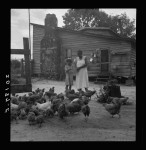 The photographers traversed the country, capturing rural and suburban farmers, migrant workers, their families, equipment and stock in every state. When the goal of resettlement soon died on the vine, the RA shifted focus to the construction of relief camps in California for migrant workers fleeing the devastation of the Dust Bowl. Stryker made sure his team of artists were funded and that their photographs were published in the mainstream press. These early RA pictures established the reputations of photographers whose images would soon become enduring symbols of America in the Great Depression.
The photographers traversed the country, capturing rural and suburban farmers, migrant workers, their families, equipment and stock in every state. When the goal of resettlement soon died on the vine, the RA shifted focus to the construction of relief camps in California for migrant workers fleeing the devastation of the Dust Bowl. Stryker made sure his team of artists were funded and that their photographs were published in the mainstream press. These early RA pictures established the reputations of photographers whose images would soon become enduring symbols of America in the Great Depression.
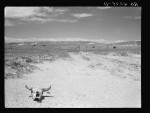 On January 1, 1937, the RA was subsumed under the Department of Agriculture and in September of 1937 it was transformed into the Farm Security Administration (FSA). The photography program continued under the FSA for another five years until it was transferred to the Office of War Information. The FSA was eliminated and all the photographs in its files were sent to the Library of Congress. The OWI photography program focused on documenting the country’s mobilization in World War II. Farms gave way to airplane factories and migrant laborers to soldiers. The OWI was dissolved in 1945.
On January 1, 1937, the RA was subsumed under the Department of Agriculture and in September of 1937 it was transformed into the Farm Security Administration (FSA). The photography program continued under the FSA for another five years until it was transferred to the Office of War Information. The FSA was eliminated and all the photographs in its files were sent to the Library of Congress. The OWI photography program focused on documenting the country’s mobilization in World War II. Farms gave way to airplane factories and migrant laborers to soldiers. The OWI was dissolved in 1945.
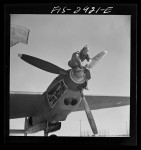 By the end of the decade-long FSA-OWI photography programs, they had generated an extraordinary archive of almost 170,000 pictures, prints and negatives. The archive was kept at the Library of Congress, grouped together with the Office of Emergency Management-Office of War Information Collection, the American at War Collection and the Portrait of America Collection. Because the LoC is consistently awesome, the archives have been digitized and made available to the public. You can even surf the exceptional color photographs of the FSA-OSI collection on the LoC’s Flickr page.
By the end of the decade-long FSA-OWI photography programs, they had generated an extraordinary archive of almost 170,000 pictures, prints and negatives. The archive was kept at the Library of Congress, grouped together with the Office of Emergency Management-Office of War Information Collection, the American at War Collection and the Portrait of America Collection. Because the LoC is consistently awesome, the archives have been digitized and made available to the public. You can even surf the exceptional color photographs of the FSA-OSI collection on the LoC’s Flickr page.
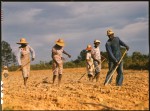 To make perusing this record, following in the footsteps of the photographs as they crossed the country, easier, a team from Yale University with funding from the National Endowment for the Humanities have created a web platform called Photogrammar. You can search the database by keyword, date, location or select the name of a photographer and browse all of his or her work. The best part, though, are the maps. There’s one organized by county (the darker the green the more photographs) and one where each photographer is represented by a dot of a different color. I especially love the dot map with the 1937 Vico Motor Oil Map feature turned on, because you can see the movements of the photographers on the street map. You can see all the photographers on the maps at once, or you can select one at a time from the dropdown menu.
To make perusing this record, following in the footsteps of the photographs as they crossed the country, easier, a team from Yale University with funding from the National Endowment for the Humanities have created a web platform called Photogrammar. You can search the database by keyword, date, location or select the name of a photographer and browse all of his or her work. The best part, though, are the maps. There’s one organized by county (the darker the green the more photographs) and one where each photographer is represented by a dot of a different color. I especially love the dot map with the 1937 Vico Motor Oil Map feature turned on, because you can see the movements of the photographers on the street map. You can see all the photographers on the maps at once, or you can select one at a time from the dropdown menu.
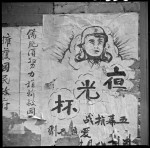 Then there are the data experiments that are still works in progress. I like the Metadata Explorer which illustrates the distribution of photographers over time and subject matter in California.
Then there are the data experiments that are still works in progress. I like the Metadata Explorer which illustrates the distribution of photographers over time and subject matter in California.
It’s a brilliant way to collate a collection so large that it’s quite beyond human scale. It’s also a time sink of massive proportions, needless to say, especially if you want to explore the photographs in greater detail by clicking on the Library of Congress Call Number which opens the picture on the LoC site where you can view them in high resolution which of course I did religiously.
Roosevelt wasn’t exactly a radical, but he faced opposition and hostility to every pro-worker programme that he proposed. The Resettlement Administration, like other New Deal packages, was bound to be defeated before it got going or be dismantled as soon as Roosevelt was defeated.
Therefore the photographers, and artists, were essential to document tbe brief history.
Not all residents fled the Dust Bowl regions. “The Worst Hard Time” chronicles survivors’ tales, compiled by Timothy Egan in 2006. How the people survived is extraordinary, especially when the dust storms blew. People and animals were dying from breathing dirt into their lungs. The Dust Bowl was a man-made disaster. For the past 70 years the modern corporate farmers have pumped the water from the aquifer beneath the Great Plains area to irrigate their fields until now it is nearly depleted. This will lead to another crisis, and probably, sinkholes of massive proportions.
I just spent some time looking at all the areas my family was in at the time. It is too bad that these documentation programs were never adequately supported (though understandable). There are significant blanks in the record, even in areas that were photographed. Striking to me that I was unable to find any photos on Indian reservations, though the Badland addition was well-photographed. Dorothea Lange and a few other photographers stand out for their ability to capture the essence of a situation, while others took what are essentially anonymous postcard pics. Most were in between. All contributed something to the understanding of specific places in a specific era. What a great inspiration to present them by location.